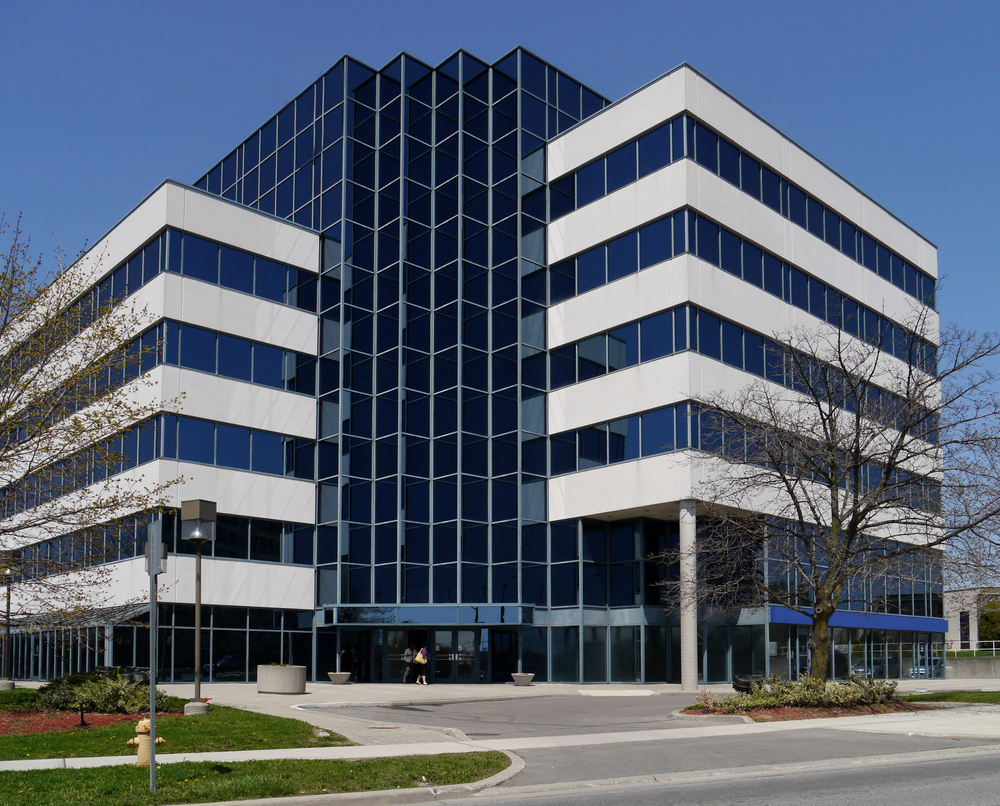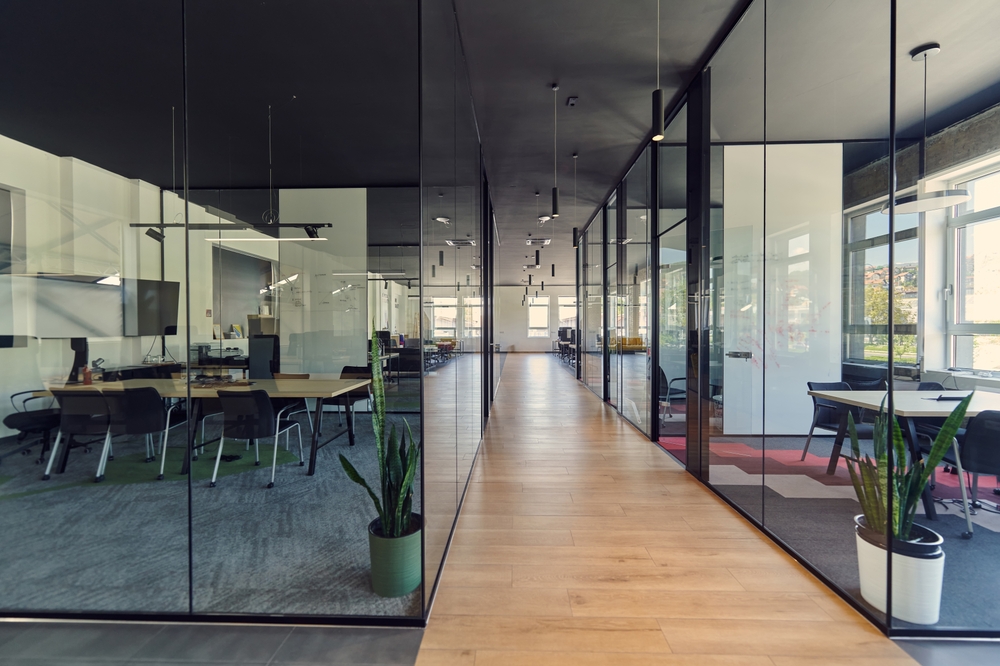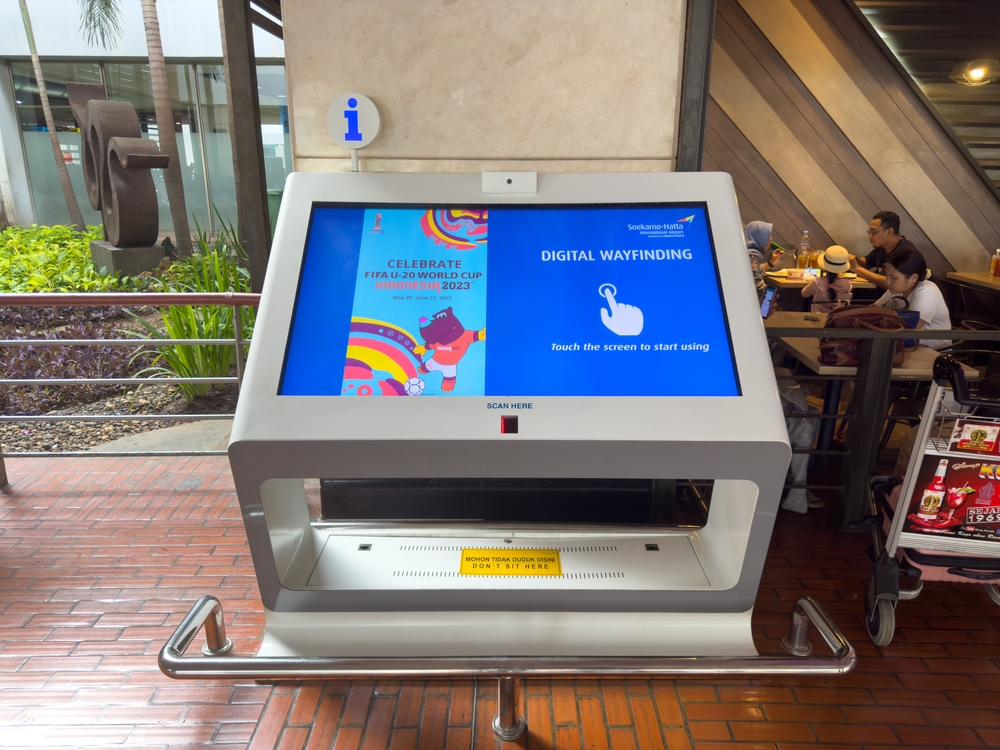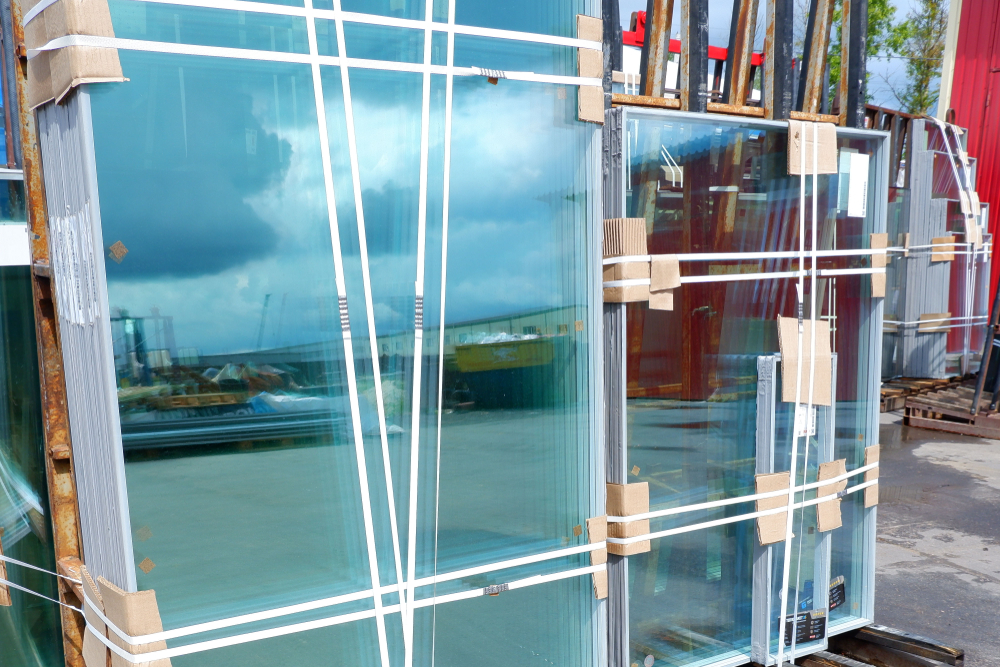Glass has always been at the forefront of innovative architectural design. Over the past decade, commercial glass has evolved far beyond simple panes and windows. Today’s custom glass options are smarter, stronger, and more integral to building performance than ever before.
With demands for sustainability, technology integration, and unique aesthetics on the rise, business owners need products that do more than let in light. They need experts in commercial glass who can provide the materials and experience to actively improve comfort, efficiency, safety, and branding.
That’s where Springfield Glass Company comes in. In this article, we’ll share why glass is the key to a polished, professional look and an inviting business. From large, modern panels to technological integrations, we’re here to shine some light on which type of glass best reflects your business. Keep reading to explore five of the most forward-thinking custom glass options shaping today’s commercial landscape.

1. Smart Glass, aka Switchable and Privacy Custom Glass
Smart glass, also called switchable or privacy glass, can change from clear to opaque automatically or using a button or an app. This glass is made of advanced materials that adjust transparency, offering flexible privacy solutions for offices, healthcare spaces, conference rooms, and storefront glass.
How Is Smart Glass Made?
Smart glass begins with high-quality tempered glass that undergoes a meticulous lamination process. At the heart of the technology is a film containing Polymer Dispersed Liquid Crystals (PDLC) or Suspended Particle Devices (SPD). This film is cut according to project specifications and placed between two glass panes. These are then laminated together under vacuum in a controlled environment to ensure clarity and avoid defects.
During the lamination, conductive coatings (often Indium Tin Oxide) are applied to the inner glass surfaces. These allow electrical current to flow evenly across the liquid crystal film. The assembly is sealed, tested for performance, and trimmed for the final commercial glass installation.
How Does Smart Glass Work?
Smart glass uses electricity to control visibility and privacy on demand. When powered off, the liquid crystals or suspended particles within the film remain randomly arranged, scattering light and turning the glass opaque. When electrical current is applied, these particles align and allow light to pass through, turning the glass clear.
The opacity level can be adjusted by varying the voltage. These systems often tie into building automation for scheduled or sensor-triggered privacy, offering dynamic and customizable control throughout the day.
Key Benefits of Smart Glass
- Provides on-demand privacy for meetings and sensitive areas
- Eliminates the need for traditional blinds, curtains, or screens
- Reduces glare and solar gain by increasing interior comfort
- Contributes to energy savings by passively managing sunlight

2. Electrochromic or Tinting Glass
Electrochromic glass production begins with sheets of glass that are coated with multiple ultrathin layers of electrochromic materials — typically metal oxides — sandwiched between conductive coatings. This “stack” is sealed and assembled as a unit. These layers exchange ions when voltage is applied, resulting in a visible change in light transmission.
The glass is further processed for durability. If intended for exterior use, it’s laminated with additional glass sheets to create insulated glass units (IGUs). The finished IGU can incorporate sensors or be networked into whole-building shading and automation systems.
How Does Electrochromic Glass Work?
When an electric charge is applied to the electrochromic layers, they undergo a controlled chemical change, adjusting the glass tint. This transition can be gradual or rapid, depending on the control input, and it adapts automatically in response to light, temperature, or user commands.
Unlike privacy glass, electrochromic glazing modulates visible light and heat without going fully opaque. This maintains natural illumination and exterior views while reducing glare, energy consumption, and utility costs.
Key Benefits of Electrochromic Glass
- Maximizes daylight and minimizes glare in large, sun-exposed spaces
- Reduces heating and cooling costs by controlling solar gain
- Increases occupant comfort and well-being throughout the day

3. Bird-Friendly Glass With UV Patterns
Bird-friendly glass is exactly what it sounds like: glass specifically designed to prevent bird collisions with transparent facades. Birds can’t see glass; they just see what’s reflected in its surface, such as trees or open sky. As one of the biggest threats to migratory birds, manmade structures need to be designed with wildlife in mind.
Glass designers and engineers stepped up to the challenge with a science-based solution. Custom glass manufacturers apply UV-reflective patterns to the surface of glass, typically using screen printing, acid-etching, or special UV-curable inks. These patterns are engineered to be highly visible under ultraviolet light. This allows birds to see the glass as a barrier while remaining unobtrusive to humans.
The treated glass is often paired with other performance technologies, such as insulated glass units or low-E coatings. This enables the glass to meet both safety and energy efficiency goals. The manufacturing process also prioritizes pattern consistency and durability to withstand exterior conditions.
How Does Bird-Friendly Glass Work?
Birds naturally have a heightened sensitivity to UV light. While humans see only faint or no patterns, birds spot the UV-reflective designs and are deterred from flying into the glass. Bird-friendly glass takes advantage of this to prevent wildlife loss and building damage from bird collisions.
Key Benefits of Bird-Friendly Glass
- Reduces the chance of bird collisions, supporting local life and sustainability efforts
- Helps your building comply with emerging safety regulations and prevent damage
- Showcases your brand’s commitment to ecological responsibility

4. Integrated Custom Glass Options With Embedded Displays
Creating display-embedded glass is a complex, multi-step process. Manufacturers start by layering transparent LED or OLED display modules between sheets of glass, often combining with touch-sensitive films (just like your smartphone or tablet) for interactive capability. The display and electronic layers are laminated to maintain optical clarity and ensure that the window remains transparent when the display is inactive.
Media control units are then integrated, allowing the embedded display to connect with content management systems and interfaces for real-time updates. The resulting custom glass is engineered for size, performance, and interactivity, well-suited for high-impact commercial applications.
How Do Embedded Glass Displays Work?
Embedded glass displays are a blend of digital display technology and architectural glazing. When activated, the embedded displays project vibrant images, video, or interactive touch content directly through the glass surface.
When turned off, they revert to being clear or subtly tinted windows. Applications range from dynamic storefront signage and branded office features to wayfinding in hospitality and healthcare environments.
Key Benefits of Embedded Custom Glass Displays
- Interactive storefronts and interiors that captivate visitors and customers
- Dual-purpose glass acts as both a window and a high-visibility digital display
- Improves customer experience with branded, dynamic, or wayfinding content

5. High-Performance Insulated Glass Units With Low-E and Solar Coatings
High-performance IGUs are constructed by assembling two or more panes of glass separated by spacers to form a sealed, insulating air gap. The internal and/or external glass surfaces are coated with microscopically thin layers of metallic oxide known as low-emissivity (low-E) coatings that reflect infrared and UV energy. Argon or krypton gas is used between panes to maximize thermal insulation. Warm-edge spacers also reduce heat transfer at the glass perimeter.
Triple or quadruple glazing layers are available for environments with extreme temperature needs or where energy standards are particularly stringent. These IGUs go through rigorous testing to ensure long-term durability and thermal performance.
How Do IGUs Low-E and Solar Coatings Work?
The key to IGU performance lies in complementary systems working together. The low-E coatings block unwanted solar heat gain while allowing visible light transmission and reducing HVAC strain.
Multi-pane configurations with inert gas fill further prevent heat loss or gain. This keeps interior spaces comfortable, lowers energy bills, and helps buildings comply with strict energy codes and sustainability certifications.
Key Benefits of IGUs With Low-E and Solar Coatings
- Easily meet or exceed tough energy codes and green building standards
- Reduce HVAC reliance, cutting both operational costs and emissions
- Improve interior temperature consistency, helping to keep occupants comfortable

Integrating Custom Glass Options in Commercial Projects
For most businesses, multiple glass types are needed for different applications, especially when integrating them with your building systems. Smart glass, electrochromic, and embedded display systems can be tied into centralized building management for easy automation and remote adjustments.
Occupancy, light, and climate sensors trigger automated responses for shading, privacy, and daylight optimization. This increases the overall comfort of your building and minimizes unnecessary energy use.
When combined effectively, your custom glass can deliver powerful security benefits. From the risk of crime to accidental damage from feathered friends, the right commercial glass reduces the risk of costly repairs. High-performance glass with impact-resistant frames, advanced spacers, and access control systems keeps your glass in prime condition with less need for maintenance.

Create a Brighter Future for Your Business With Springfield Glass Company's Custom Glass Options
Adopting future-ready glass is more than a design statement. At Springfield Glass Company, our experts guide you through every stage of the decision-making process, from design and specification to installation and integration. We’ll help you find the right custom glass options for your business. Reach out today to make your vision a reality.
